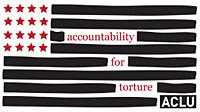For those who think this is a job for the United States, think again. The U.S. itself is implicated in the torture and murder of 100,000s in recent years, and millions over the past five decades or so, i.e., since the North Korean camps were built. A recent South Korean "truth and reconciliation" commission established U.S. complicity in mass killings of over 100,000 leftists and others in South Korea before the start of the Korean War.
The U.S., of course, has its own problems with torture, and the recent assassination of Osama bin Laden by U.S. Special Forces has reignited the mendacious debate over the effectiveness of torture by the former minions of the Bush administration. Few, in the U.S. anyway, are questioning the legality of the U.S. extrajudicial murder of bin Laden and other presumed terrorists. (That's not the case in Europe, as Glenn Greenwald pointed out).
The world is in a heap of trouble, as there is no established state power on this planet that really gives a damn about human rights, and even worse, uses pious words about human rights to conquer and destroy other lands, as the U.S. did in Iraq. (See Michael Otterman's incredible book, Erasing Iraq: The Human Costs of Carnage, written with Paul Wilson and Richard Hill.)
International commissions formed of workers unions, associations and other civil organizations from around the world should be formed to assess and gather information about torture and other crimes against humanity in countries around the world. These commissions should be free of any governmental interference, and be beholden to know particular NGO organization, as well.
From the AI article:
Amnesty International has published satellite imagery and new testimony that shed light on the horrific conditions in North Korea’s network of political prison camps, which hold an estimated 200,000 people.
The images reveal the location, size and conditions inside the camps. Amnesty International spoke to a number of people, including former inmates from the political prison camp at Yodok as well as guards in other political prison camps, to obtain information about life in the camps.
According to former detainees at the political prison camp at Yodok, prisoners are forced to work in conditions approaching slavery and are frequently subjected to torture and other cruel, inhumane, and degrading treatment. All the detainees at Yodok have witnessed public executions.
“North Korea can no longer deny the undeniable. For decades the authorities have refused to admit to the existence of mass political prison camps,” said Sam Zarifi, Amnesty International Asia Pacific Director.
“These are places out of sight of the rest of the world, where almost the entire range of human rights protections that international law has tried to set up for last 60 years are ignored.”
“As North Korea seems to be moving towards a new leader in Kim Jong-un and a period of political instability, the big worry is that the prison camps appear to be growing in size.”
Amnesty International believes the camps have been in operation since the 1950s, yet only three people are ever known to have escaped Total Control Zones and managed to leave North Korea. About 30 are known to have been released from the Revolutionary Zone at Political Prison Camp in Yodok and managed to leave North Korea. According to the testimony of a former detainee at the revolutionary zone in the political prison camp at Yodok, an estimated 40 per cent of inmates died from malnutrition .between 1999 and 2001.
Satellite images show four of the six camps occupying huge areas of land and located in vast wilderness sites in South Pyongan, South Hamkyung and North Hamkyung provinces, and producing products ranging from soy bean paste and sweets to coal and cement.
A comparison of the latest images with satellite imagery from 2001 indicates a significant increase in the scale of the camps.
In just one camp, Kwanliso 15 at Yodok, thousands of people are believed to be held as "guilty-by-association" or sent to the camps simply because one of their relatives has been detained.
The majority of prisoners, including some of those ‘guilty-by-association’, are held in areas known as ‘Total Control Zones’ from which they will never be released.
A significant proportion of those sent to the camps don’t even know what crimes they’re accused of.
Amnesty International spoke to former detainees of the political prison camp known as Kwanliso 15 at Yodok.
A former inmate, Kim, told Amnesty International: “Everyone in Kwanliso witnessed executions. When I was an inmate in Kwanliso15 at Yodok, all those who tried to escape were caught. They were interrogated for two to three months and then executed.”









1 comment:
I think this is a job for China which is the strongest supporter of North Korea government.
Post a Comment